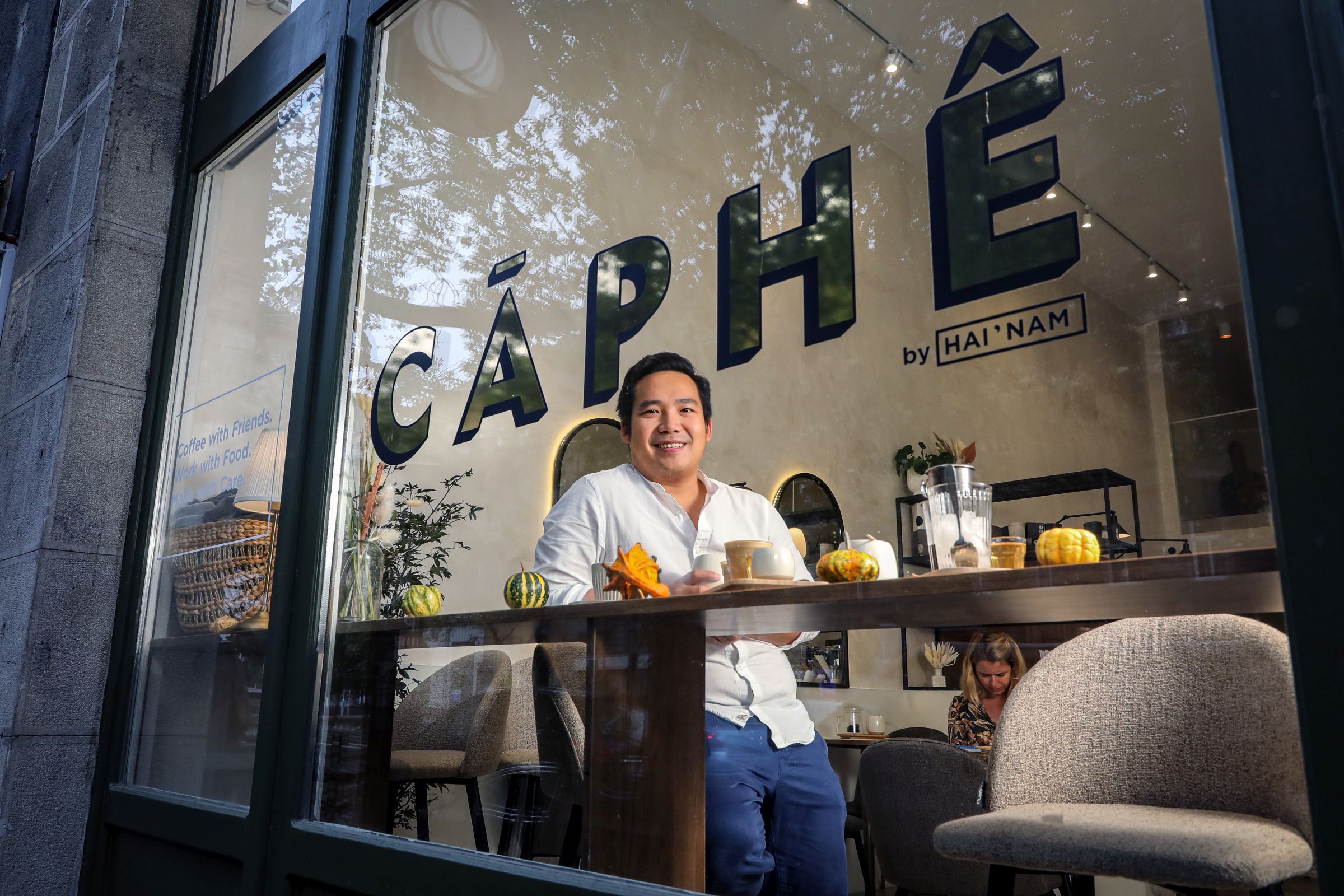Vo Son Hai is no stranger to the world of hospitality – his parents are behind the longest-running Vietnamese restaurant in Budapest, one of the first places in the city to serve now ubiquitous pho soups. Hai first took a different direction in life, shooting for the stars instead of the family business, and worked as a flight attendant for a Japanese airline. After travelling all around the world, he decided that it was time to come back home, and follow in his family’s footsteps – but in a different and unique way.

As a resident of District XI, he realised that Bartók Béla út might already be overflowing with excellent cafés. Still, he believed that he could bring something new to the table – a place that is not only about coffee, but focuses on the vibrant world of Asian coffee culture, with all its connected rituals, serenity, purity and philosophy.
He wanted to show that Vietnamese attitudes towards coffee have changed over the last decade, and that it’s no coincidence that Vietnam is the now second-largest exporter of coffee in the world. But as this beautifully designed, sophisticated café is also open to the world’s other great representatives of coffee, visitors can find specialty and traditional Italian espresso at Caphe, too.
Hai tells us that it’s the French who are responsible for the spread of coffee culture in Vietnam – normally, the most dominant beverage in Asia is tea. Now, good coffee is a must for the younger generations in Vietnam, who have embraced its traditional culture. For them, there is an entire séance accompanying drip coffee.
Relax over robusta
"By the time you finish what you had to say, the coffee has all dripped down, and you can immerse yourself into the drink. In Vietnam, coffee is seen as a small break, as a time of relaxation, when you can be just by yourself for a while. It’s most commonly consumed with condensed milk that the hot coffee drips on, and this way the strong zing of the robusta coffee is slightly softened. Then there are also those who drink it on its own, while some put ice cubes in it, and some enjoy it while it's hot – but the ceremony is always there,” says Hai.
Stepping inside Caphe, you find yourself in a modern, minimalist and bright space. With the help of interior designer Kinga Bajor, Hai created a locale that combines Scandinavian purity with Oriental elements.
As Hai says, “In Vietnam, the best coffee is not sold on a main street, but in a small place at the back of an alley, on the third floor. However, I wanted reflect the atmosphere of a French colonial café, with a modern twist”.

In addition to Vietnamese coffee, Caphe also serves specialty and espresso brews, sourced from the Maran roaster in Siófok. There’s a medium roast for the lovers of traditional coffee, and a lighter roast for specialty fanatics, with coffee beans from Ethiopia, Burundi and Nicaragua. Caphe phin, aka Vietnamese coffee, is always prepared with a robusta-arabica blend. Maran coffee master, Marci Losonczy, helps Hai to find the finest new brews for his locale.

Tea also features at the café, with a variety of premium specialty options to choose from, thanks to Teavolution. They include an autumnal, cocoa-flavoured Taiwanese oolong, Pumpkin Gaba, as well as Moonlight Black, a Chinese black-tea blend.

The food is also mostly Vietnamese here, with bahn mi (700-1,500 HUF), in the spotlight. Combining the baguettes of the French colonisers with spicy Vietnamese fillings, this fusion sandwich speciality is a rare delight in Budapest’s Asian gastronomical scene, but here they serve six versions of it.
The basic sandwich comprises butter, cucumber, daikon radish, sour beet, coriander and roasted onions, as well as the most important ingredient when it comes to bahn, the homemade pâté de campagne, aka homemade liver pâté. You can also add optional items such as scrambled eggs, spicy loin, lemongrass pork, hai-nam chicken, or get the special or vegan version, which comes with a plant-based pâté.

The sandwiches, just like the coffee and tea, were created with authenticity and subtlety in mind. In Vietnam, bahn is often quite rustic and incredibly spicy, served on streets and in canteens – here, this Asian sandwich is a lot more sophisticated, well-balanced and tasteful.
As Caphe is most frequented in the early mornings and in the afternoons, Hai wanted to provide breakfast and brunch options as well. He tells us that there will be events where visitors can sample a full Vietnamese breakfast with everything from chao porridge to pho, but they will normally be offering cold dishes in the mornings, such as sandwiches, baked goods and exotic fruit desserts.
The sandwich fillings, the spicy meats, the vegan pâté and the brunch dishes are all made locally at the café, hence the ‘by Hai Nam’ in the name of the locale.

Caphe by Hai Nam is a must-try for all coffee aficionados – not only because they have a deep understanding of coffee, but also because it’s not easy to find all three types of the world’s most popular coffees – Vietnamese, Italian and specialty – in one place. The bright, simple and relaxing interior and the comfortable chairs give a true sense of calm while enjoying a hot drink.

This article was written in collaboration with the gastronomic campaign of Piqniq Budapest and Mastercard.




